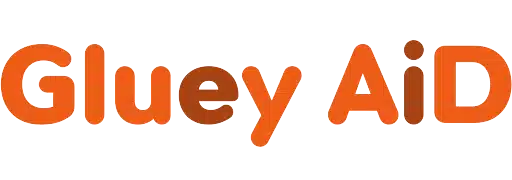The 3M PR40 and PR100 are highly reliable permanent adhesives suitable for plastic and rubber. However, the PR100 is stronger and more expensive than the PR40.
Page Contents
Key Takeaways
- 3M PR40 and PR100 are versatile, low-viscosity glues, reliable for creating a permanent bond.
- Both adhesives come in liquid form and are highly suitable for bonding rubber and plastic.
- However, the PR40 dries and cures faster than the PR100, which is stronger.
I was experimenting with various low-viscosity adhesives when I came across 3M PR40 and PR100.
With their instant gluing formula, these adhesives are versatile and suitable for various materials.
But when it comes to 3M PR40 vs. PR100, how similar or different are they?
Well, from the adhesive formula and application to curing time and cost, the glues are quite different from each other.
If you want to learn more about these adhesives, I urge you to stick around (no pun intended) until the end.
3M PR40 Vs. PR100
Overview of 3M PR40 Adhesive
The 3M PR40 is a liquid and instant adhesive, highly suitable for use on plastic, rubber, nylon, polyethylene, polypropylene, etc.
This low-viscosity glue is easy to apply and creates a permanent bond in a few seconds.
The clear substance will not become foggy or turn yellow even after a long time. Moreover, it is pretty affordable and suitable for quick use.
The best part is, once you bond two parts with it, you won’t be able to tell they were ever apart.

Overview of 3M PR100 Adhesive
Just like the 3M PR40, the PR100 is also an instant superglue. You can use it easily to bond rubber, plastic, polyvinyl chloride, and many more materials.
Apply in thin lines and let it do the magic. The glue takes only around 30 seconds to start drying.
Its bonding strength is amazing and reliable for heavy-duty projects.
On top of that, it’s very reliable to use in high and low temperatures without worrying about making a mess.
Detailed Discussion on 3M PR40 Vs. PR100
While PR40 and PR100 are strong and durable adhesives, they also differ. I have discussed them in detail in the following part.
Adhesive Type and Formula
The PR40 from 3M is a permanent superglue that comes in liquid form. Its primary ingredients are ethyl cyanoacrylate and resin.
The formula gives the glue a clear form, making it suitable for use on various materials.
Similarly, the PR100 is also a permanent adhesive with ethyl-2 cyanoacrylate, resin, and hydroquinone as its primary ingredients.
This adhesive is also liquid like the PR40 and has a remarkably clear form.
Low-Viscosity
Both PR40 and PR100 are known for their low-viscosity feature. The advantage of such adhesives is that they dry faster and create a firmer bond.
But what is their viscosity level?
The 3M PR40 has a viscosity level of 20 – 45 cps. On the other hand, the PR100’s viscosity level is 70-110 cps.
It means the first one is thinner and more liquid, while the latter is less thin.
But you can barely tell the difference by looking at them.

Convenience
You will also find both of these adhesives are pretty convenient and easy to use.
They come in various bottles. And all you have to do is squeeze the bottles slightly to apply the glue.
I would say the best way to apply the PR40 is by squeezing out tiny beads or drops.
And the PR100 sticks well if you apply it in thin lines.
Drying and Curing Time
I was impressed by how fast the PR40 dried and bonded. It starts drying 3 seconds after application and dries well by 15 seconds.
On the other hand, the PR40 takes around 30 seconds to dry completely due to a higher viscosity level.
Nevertheless, both glues need at least 24 hours to cure completely.
Bonding Strength
While both these glues have impressive bonding strength, the PR100 is slightly stronger than the PR40.
It has a shear strength of 2100 psi, while the PR40 has a strength of 2000 psi.
Shelf Life
Both PR40 and PR100 have a long shelf life. You can expect them to stay in good condition for about a year if stored in a cool, dry place.
However, there is a catch!
Since they are liquid adhesives with an instant sticking formula, they can get dried or hardened if not stored properly.
On top of that, it can also clog the nozzles, making it very challenging to use them later.
Cost
By now, you are well aware that the 3M PR40 and PR100 have different adhesive formulas and vary in quality.
Naturally, it affects the price significantly. And the 3M PR100 costs more than PR40.
Is 3M40 Better Than PR100?
Whether the PR40 is better than PR100 depends on what you expect from it.
The PR40 is undoubtedly more convenient as it dries faster than the PR100. However, it gives you less time to make any adjustments.
No, the PR100 doesn’t give you much time either, but it takes a few more seconds to dry.
Editor’s Opinion
If you want to pick something less costly yet convenient, I recommend the PR40.
However, if you want something stronger and don’t mind the higher price, the PR100 will be worth it.




